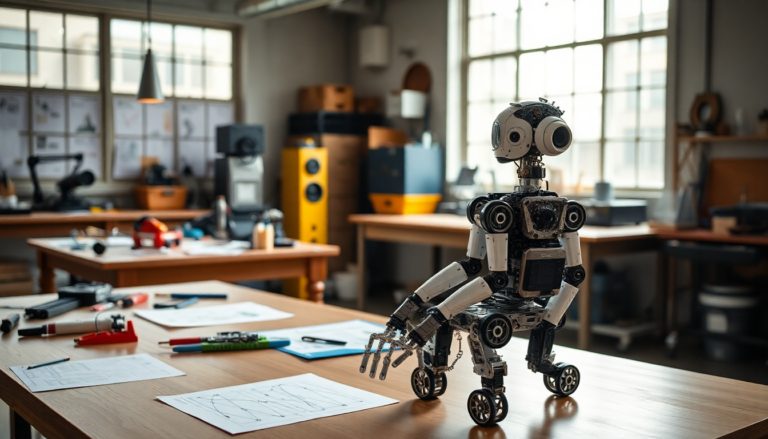Argomenti trattati
Teddy Warner, a 19-year-old with a passion for robotics, is stepping into the spotlight with his ambitious startup, Intempus. Having grown up in a family entrenched in the industry, Warner honed his skills in a machinist shop during high school. Now, he’s on a mission to create robots that not only perform tasks but also exhibit human-like emotional responses, thereby enhancing the interaction between humans and machines.
Transforming robots with emotional intelligence
At the heart of Intempus’s vision is the desire to retrofit existing robots with the ability to express emotions. Warner believes that by incorporating human-like reactions, machines can become more intuitive companions, allowing humans to better understand their movements and intentions. “Humans derive a lot of our subconscious signals not from facial expressions or words but from the movement of our bodies,” Warner explained. This insight is pivotal in designing robots that resonate with human users on a deeper level.
The inspiration behind Intempus
Warner’s journey into the world of emotional robotics began during his time at Midjourney, an AI research lab. He observed that many AI models struggled with spatial reasoning, primarily because the data they were trained on came from robots lacking this essential capability. “Currently, robots move from observation to action without a physiological state, which humans and all living beings have,” he said. This realization spurred Warner to explore ways to bridge this gap, leading him to the innovative concept behind Intempus.
Innovative approaches to emotional data
Warner initially experimented with fMRI data, aiming to capture brain activity related to emotional responses. However, this approach didn’t yield the desired results. A suggestion from a friend led him to experiment with polygraph tests, which detect physiological changes like sweat production. The success of using sweat data to train his models was a revelation. Warner shared, “I was amazed at how quickly I could gather sweat data and train a model that allowed robots to have emotional compositions based solely on that data.” This breakthrough opened the door to additional physiological measures, including heart rate and body temperature, to further enhance robots’ emotional capabilities.
Building a company from the ground up
Launched in September 2024, Intempus started with intensive research during its first four months. Warner, working solo, now balances the development of emotional capabilities for robots with outreach to potential customers. He has already established partnerships with seven enterprise robotics companies, showcasing the market’s interest in his vision. Moreover, Intempus is part of the Thiel Fellowship program, which provides young entrepreneurs with $200,000 over two years to drop out of school and focus on their ventures.
Future aspirations and the road ahead
As Intempus continues to evolve, Warner’s next steps involve expanding his team and bringing his innovations into real-world applications. While the primary focus remains on enhancing existing robots, Warner is open to the idea of creating emotionally intelligent robots from scratch in the future. He envisions a world where robots can convey emotions, making them more relatable and integrated into human lives. “I have several robots running different emotional models, and I want to ensure they can express joy or other emotions clearly,” he stated. Warner aims to demonstrate the efficacy of his technology in the coming months, marking a significant milestone in the field of robotics.

